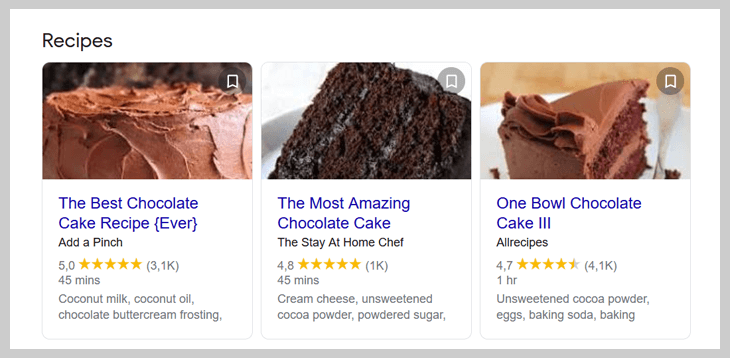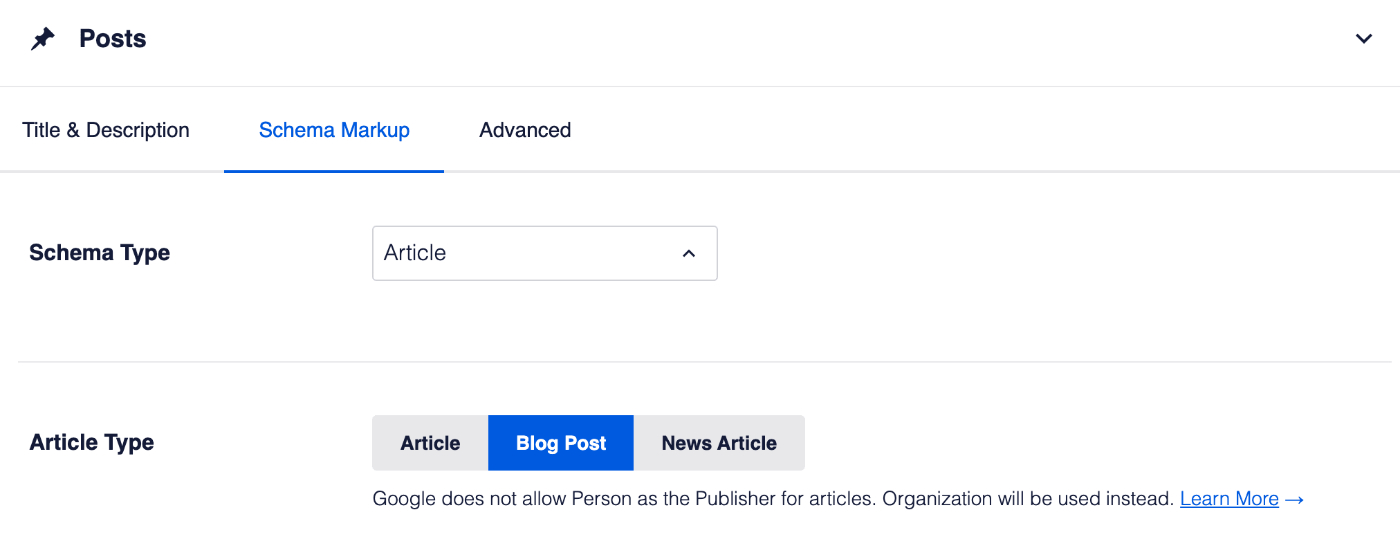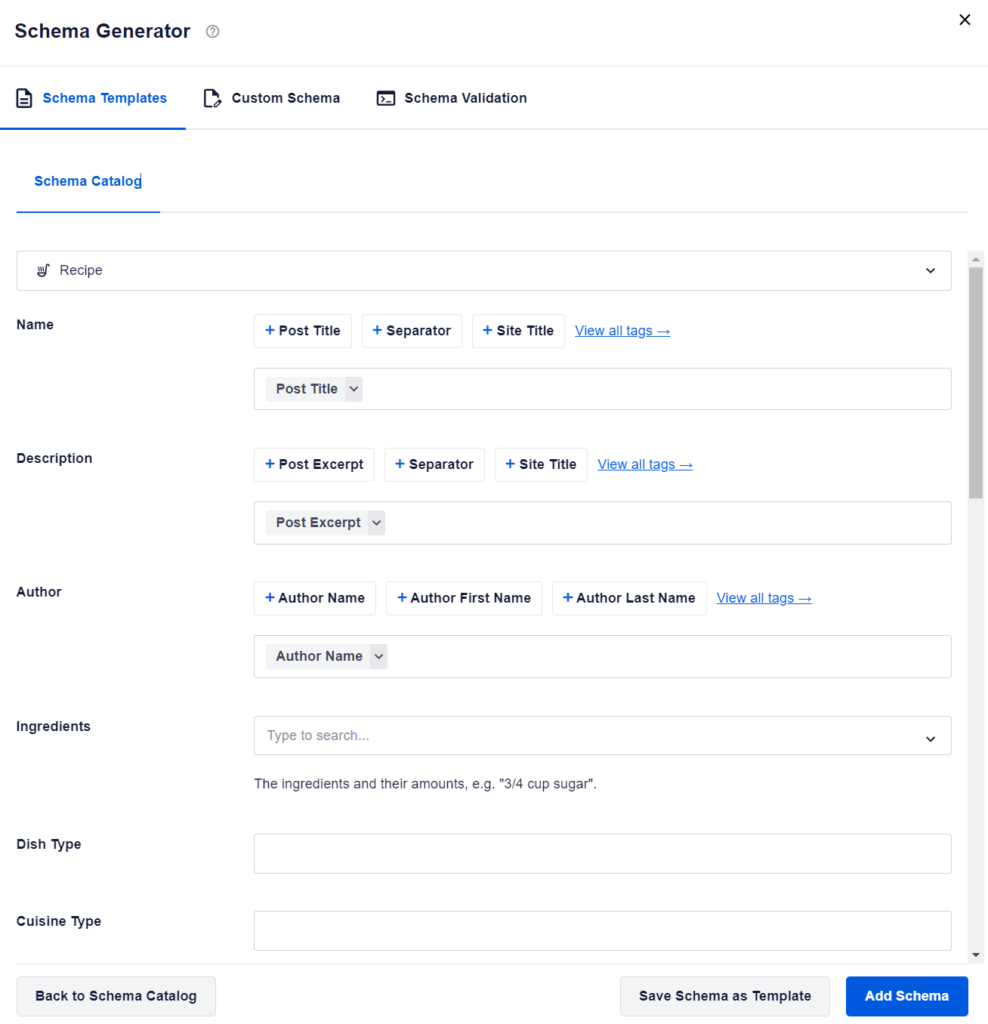Notice: There is no legacy documentation available for this item, so you are seeing the current documentation.
Did you know that All in One SEO Pro lets you add Schema markup for recipes?
This means that search engines can display rich snippets for your recipes like the example below.

IMPORTANT:
You can’t force Google to display search results like this. It happens on a per search basis depending on whether they feel it’s the best way to display the results.
In This Article
Tutorial Video
Setting the Default Schema Type for all Recipes
To set the default Schema Type for your recipes, click on Search Appearance in the All in One SEO menu, then click on the Content Types tab.

Scroll down to the section for your recipes and click on the Schema Markup tab.

Now select Recipe in the Schema Type drop down and click the Save Changes button.
For more detail on this, please see our article on Configuring Schema Settings here.
NOTE:
Schema Controls for Recipes is available to customers with a Basic plan or above for All in One SEO Pro.
Upgrade to All in One SEO Pro today to get Recipe Schema and many more features!
Setting the Schema Type for Individual Recipes
To set the Schema Type for individual content, edit your content and scroll down to the AIOSEO Settings section, then click on the Schema tab.
Now, click the Generate Schema button to open the Schema Generator.

You’ll see the Schema Types that are available.
Click the Add Schema icon next to Recipe to add it.

You can now edit the schema information.
Once done, click the Add Schema button to add the schema to the post.

The Recipe schema has now been added to the post.
If you would like to edit any of the schema properties or delete the graph, click the Edit Schema or Delete Schema buttons in the graph card.

Configuring the Recipe Specific Information
When you click on Recipe as the Schema Type for your content, you’ll see a popup with additional fields where you can enter your recipe information.
NOTE:
The information you set in All in One SEO only appears in the source code of your content. It does not appear as content visible to visitors on your site.

Complete the fields as described below:
- Name – Enter the name of your recipe. By default, this is set to your post title.
- Description – Enter the description of your recipe. By default, this is set to your post content.
- Author – Enter the name of the author of your recipe. By default, this is set to the post author.
- Ingredients – Enter the name of each ingredient including measurement, i.e. 1 tablespoon of flour.
- Dish Type – Enter the type of dish.
- Cuisine Type – Enter the type of cuisine.
- Keywords – Enter any other terms such as season, holiday, or other descriptors.
- Image – Select or upload an image that represents your article. You can also paste in the URL for an image into this field. By default, this is set to your featured image.
In the Nutrition section, you can set the following:
- Amount of Servings – Enter the amount of servings that the recipe yields.
- Calories – Enter the number of calories per serving.

In the Time Required section, you can set the following:
- Preparation Time – Enter the time it takes to prepare the ingredients.
- Cooking Time – Enter the time it takes to cook the ingredients.

In the Instructions section, add the steps to prepare the recipe. For each step, you can set the following:
- Title – Enter the title for the step.
- Details – Enter the details for the step.
- Image – Select or upload an image that visualizes the step. You can also paste in the URL for an image into this field.
Click on the Add Another Instruction link to add more steps for the recipe.
Click the Delete button to delete a step.

Once you’ve completed the fields, click the Add Schema button to save them.
You can also save this as a template which you can use on other recipes by clicking the Save Schema as Template button.
You can learn about Schema Templates here.
Additional Information
Check out more documentation on our Schema Settings here.